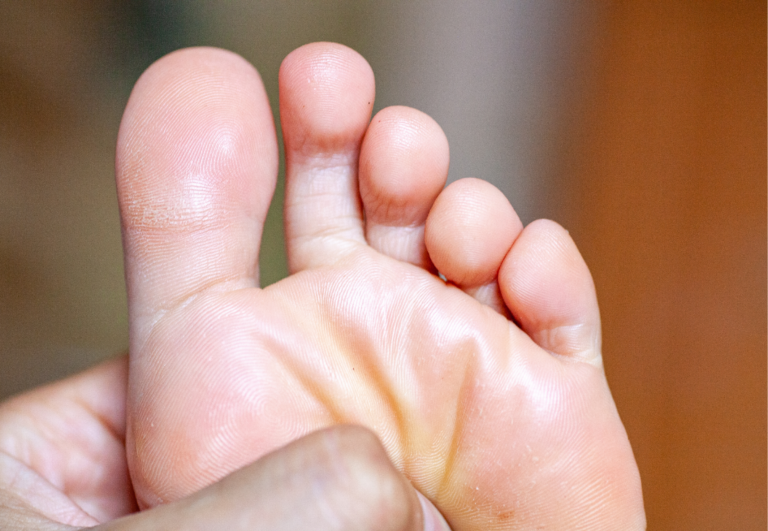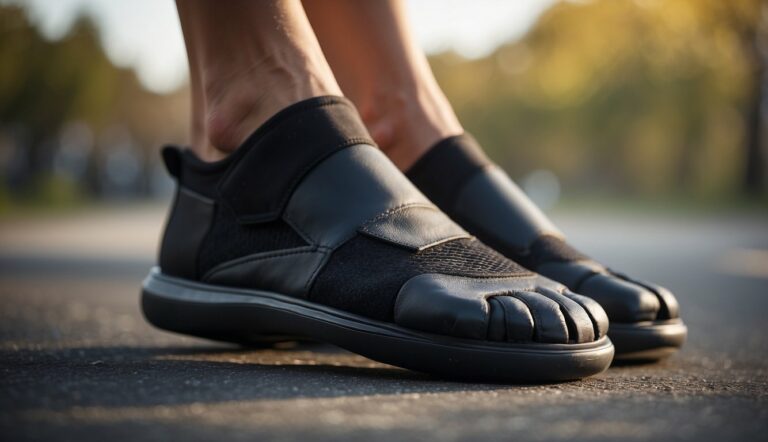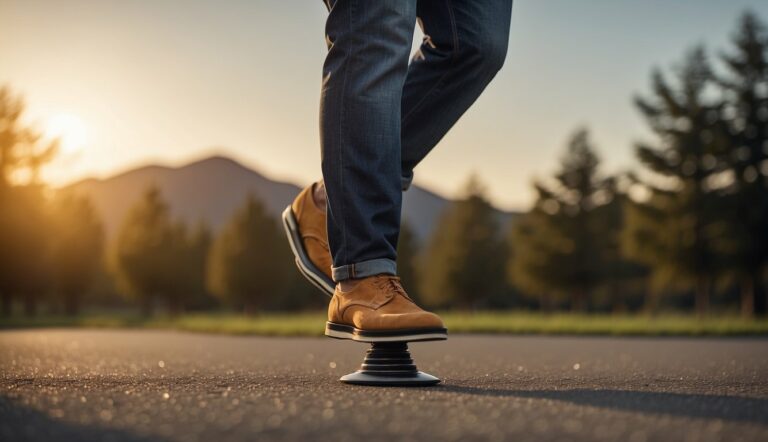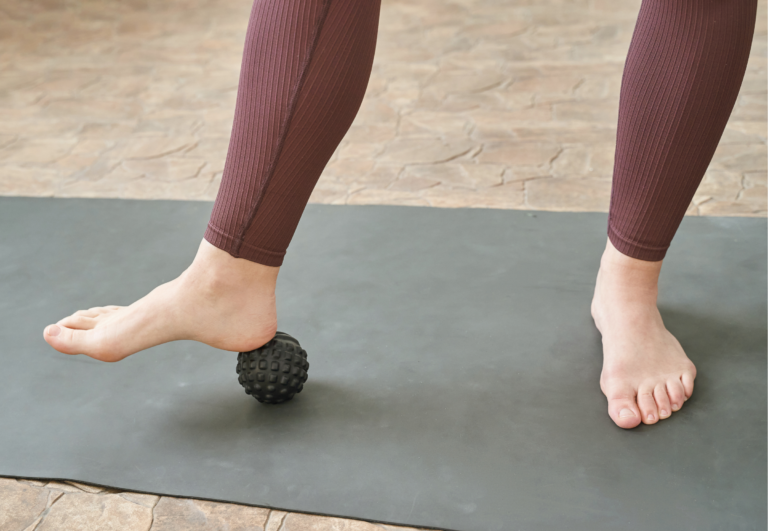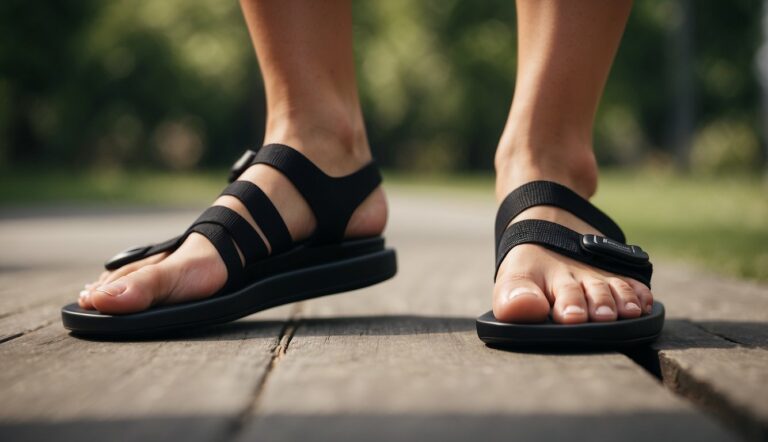Daily Toe Spacer Stretching for Healthy Feet: A Key to Podiatric Wellness
Incorporating toe spacers into your daily routine can be a game-changer for foot health. As an enthusiast who has experienced the benefits, I find these simple tools to be highly effective. By positioning them between your toes, they apply a gentle stretch that can improve toe alignment, relieve crowding, and increase circulation.
Using toe spacers has been an integral part of my foot care regimen, particularly in addressing the compression caused by tight footwear or significant time spent on my feet. The consistent use has not only aided in pain relief for me but has also contributed to enhancing my overall foot flexibility.
I’ve noticed that including toe spacers in my daily stretches strengthens the muscles in my feet, fostering better posture and balance. For those exploring ways to promote foot health, toe spacers may be a valuable addition to consider for maintaining healthy, comfortable feet.
Daily Toe Spacer Stretching for Healthy Feet
ncorporating daily toe spacer stretching into your routine can promote healthy feet by enhancing flexibility, alignment, and strength.
Here’s a step-by-step guide for daily toe spacer stretching:
- Choose Comfortable Toe Spacers: Pick toe spacers that fit well and don’t cause discomfort, as you’ll be wearing them regularly.
- Insert Toe Spacers Correctly: Gently place the toe spacers between each toe, ensuring they fit snugly but are not too tight.
- Start with a Warm-Up: Begin with a warm-up to increase blood flow to your feet. This could include a short walk, rotating your ankles, or massaging your feet.
- Perform Static Stretches: With the toe spacers in place, sit or lie down and relax your feet, allowing the spacers to passively stretch your toes. Hold this position for 5-10 minutes to start, gradually increasing the time as you become more comfortable.
- Engage in Active Stretching: While wearing toe spacers, engage in active toe stretches such as lifting your toes while keeping your heels on the ground, or spreading your toes apart actively without the help of the spacers.
- Combine with Foot Exercises: Do exercises that strengthen the muscles of the feet, such as toe curls, marble pickups, or towel scrunches. These exercises can be performed with toe spacers to enhance the stretch and strengthen the muscles between the toes.
- Consistency is Key: Make toe spacer stretching a part of your daily routine. Consistent stretching can help maintain toe flexibility and prevent stiffness.
- Gradually Increase Stretching Time: As your toes adapt, you can increase the duration you wear the toe spacers to continue to improve flexibility and alignment.
- Be Mindful of Your Feet: Pay attention to any signs of discomfort. Toe spacers should not cause pain. If you experience pain or discomfort, reduce the duration of stretching or consult a healthcare professional.
- End with a Cool Down: After stretching with toe spacers, gently massage your feet or take a walk to cool down and promote circulation.
By following these steps every day, you can help maintain the health of your feet.
Toe spacers can be particularly beneficial for those who spend a lot of time on their feet, wear tight or restrictive footwear, or have conditions such as bunions or hammertoes. Always listen to your body and consult with a healthcare provider if you have any concerns or pre-existing foot conditions.

The Importance of Toe Spacing
Toe spacing is essential for maintaining the health and mobility of your toes. It promotes proper alignment and movement, preventing the development of common foot disorders.
Toe Health and Mobility
I’ve observed how toes cramped in tight shoes can lead to misalignment and reduced mobility. Correct toe spacing allows for natural toe movement, which is critical for balance and proper gait. When toes are able to move freely, the muscles and ligaments in your feet are exercised and strengthened, helping to prevent flat feet and other alignment issues.
The Role of Toe Separators in Preventing Foot Disorders
Using toe separators can help in preventing the development of conditions such as bunions, hammertoes, and overlapping toes. By maintaining proper toe alignment, separators can reduce stress on toe joints, limit the progression of existing deformities, and alleviate pain caused by these conditions. Consistent stretching with toe separators may also benefit individuals with existing bunions by enhancing toe mobility and relieving pressure on the bunion site.
Selecting the Right Toe Separators
When looking for the ideal toe separators, focus on the materials used and the size that matches your feet to ensure comfort and effectiveness.
Materials and Design Considerations
Toe separators are available in various materials such as silicone, foam, and medical-grade gel, each offering varying levels of flexibility and cushioning. I recommend silicone or medical-grade gel for a balance between comfort and durability. The design should allow for ample space between toes and provide a gentle stretch without causing discomfort. Look for features like a soft, dual-layer cushion for added comfort if you spend long periods wearing them.
Sizing and Fit
Proper sizing is critical for toe separators to be effective:
- Small/Medium/Large: Make sure the product comes in multiple sizes or has a universal fit.
- SoftStar Shoes: Offers one of the best fits, adjustable for individual toe spacing needs.
- Correct Toes: Known for its extended wear design, suitable for various toe alignments.
Here’s a simplified guide to help you determine the right size:
| Brand | Sizing Options | Notes |
|---|---|---|
| SoftStar Shoes | Adjustable | Customizable spacing |
| YogaToes | Sizes available | For bunions; focus on big toe |
| The Toe Spacer | 5-Loop Design; one-size | Active use; multiple toe loops |
| ZenToes | Individual toe | Single toe; good for hammertoes |
| Earth Runners | One size, four toes | Excludes big toe; for runners |
Remember, the best toe spacer is one that suits your specific needs, feels comfortable, and aligns with your daily activities.
Proper Use of Toe Spacers
Toe spacers are practical tools that promote foot health by aligning toes and relieving pressure. Recognizing the correct approach to using toe spacers is essential for maximizing their benefits in daily stretching routines and while performing exercises.
Daily Stretching Routines
In my experience, toe spacers are best introduced into your daily stretching routine gradually. Starting with just 10-15 minutes daily can help your toes adjust to their new position. This consistent, short duration of use helps avoid discomfort and can lead to notable improvements in toe alignment and overall foot health over time.
Stretching Steps:
- Wash your toe spacers and dry your feet thoroughly.
- Insert toe spacers between each toe, ensuring they fit snugly but without causing pain.
- Once the spacers are in place, engage in gentle foot stretching exercises.
- Slowly increase stretching intensity and duration as your toes become accustomed to the spacers.
Incorporating Toe Spacers into Exercise
Toe spacers can also be integrated into exercise routines to support foot strength and balance. While I’m not a podiatrist, my practical application of toe spacers during low-impact activities like yoga and Pilates has shown positive results. They allow the foot muscles to engage more during these activities, contributing to a more stable foundation and potentially better posture.
Exercise Tips with Toe Spacers:
- Begin with simple balance exercises.
- Focus on proper posture and foot alignment during each movement.
- Listen to your body and stop if you experience discomfort.
In using toe spacers for both daily stretching and exercise, it’s important to select a size and material that comfortably fits your feet. Correct Toes toe spacers, which are designed to provide a natural and comfortable fit, are a good starting point for many. Always consult with a podiatrist if pain persists, as toe spacers are an aid for comfort, not a substitute for professional medical advice. Through consistent use in your daily routines, toe spacers support the journey towards better foot health, aiding in both recovery and training.
Common Foot Ailments and Toe Spacers
Toe spacers are often utilized to address common foot ailments by helping to realign toe positioning, which can reduce pain and improve foot function. They are especially beneficial for conditions like hammer toes, bunions, corns, and plantar fasciitis.
Managing Symptoms with Toe Spacers
Toe spacers designed to separate the toes can be essential in managing symptoms of foot conditions. Spacers aim to restore natural toe alignment, which can lessen the pressure on tendons and reduce the risk of corns and calluses. When used for conditions like plantar fasciitis, they can help mitigate heel pain by supporting proper foot posture.
- Bunions/Hammer Toes: Distorted toe alignment often leads to these painful conditions. Spacers can help prevent further deformation and alleviate discomfort.
- Corns/Calluses: Caused by friction and pressure, toe spacers reduce skin irritation.
- Plantar Fasciitis: Supports the foot arch and diminishes strain on the fascia.
Support and Pain Relief
Injury or chronic conditions can lead to sore feet with inflammation and pain. Using toe stretchers or spacers as part of daily foot care can provide relief and support healing.
- Sore Feet: Regular use of toe spacers can help ease foot pain after long periods of standing or walking.
- Injury Recovery: Spacers can assist in the correct healing of foot injuries by maintaining proper toe separation.
- Pain Relief: The alleviation of improper pressure points can reduce overall foot discomfort.
Note: Toe spacers are not a cure-all and should be used in conjunction with proper footwear and, when necessary, medical guidance.
Advanced Toe Spacer Applications
My experience with toe spacers has shown their versatility in not only everyday foot care but also in advanced applications such as sports performance enhancement and injury rehabilitation.
Use Cases for Athletes and Rehabilitation
Athletes often seek methods to optimize recovery and boost performance. Toe spacers can play a crucial role by helping to realign toes, which has a cascading effect on overall foot, ankle, and knee health. For instance, runners may use toe spacers to prevent injuries related to poor toe alignment or to aid in the recovery process post-injury. They’re beneficial for maintaining toe separation and alignment during training intervals when feet are under substantial stress.
In the realm of rehabilitation, toe spacers are employed as a non-invasive remedy to assist in the post-surgery recovery process. Podiatrists may recommend toe spacers to patients recovering from procedures like second metatarsal osteotomy, where toe spacers aid in preventing floating toe—a common post-surgical complication. Night splints and toe spacers can be used in conjunction to provide around-the-clock toe alignment support.
Long-Term Toe Spacer Strategies
Long-term use of toe spacers can be an integral part of a comprehensive foot health regimen. By integrating toe spacers into daily routines, individuals can work towards correcting and preventing conditions such as hammertoes or bunions, often associated with footwear that constricts natural toe spread. A daily toe spacer regimen might involve wearing them for short periods during rest or progressively increasing wearing time to build tolerance for extended use during active hours.
When considering gear for long-term toe health, it’s important to choose toe spacers that fit well and provide the desired level of separation without causing discomfort. Assessing the material and flexibility of spacers alongside a proper size match can optimize comfort and effectiveness. While incorporating toe spacers, also consider footwear that offers a wide toe box to complement toe alignment efforts.
By applying these advanced toe spacer strategies, you can bolster your foot health, and possibly enhance balance, posture, and athletic performance, while mitigating the risk of future foot-related issues.
Product Selection and Maintenance
Selecting the right toe separators and maintaining them properly is crucial for maximizing their benefits and longevity. It’s essential to choose a product that fits well with your lifestyle and to follow a care routine that keeps the separators clean and functional.
Brands and Varieties
I’ve found that the market offers a variety of toe separators made from different materials, such as silicone and gel. When looking for a product, consider the The Toe Spacer and YogaToes for their wide acceptance and positive reviews. While The Toe Spacer often comes in a 4-pack, ideal for someone who wears toe spacers frequently, YogaToes is a popular choice that focuses on the overall toe stretch and alignment.
Some separators are designed for use during physical activities; for instance, Mind Bodhi’s toe spacers are tailored for walking. Others, such as single-toe spacers, target individual toe alignment issues.
Care and Longevity
To ensure the durability of toe separators, proper cleaning is essential. Most silicone and gel models can be easily washed with soap and water. Regular cleaning prevents the buildup of bacteria and extends the use of the product. It’s worth comparing the maintenance instructions for different brands, as some products may require special care.
When handled and stored correctly, high-quality silicone separators have a long lifespan, making them a cost-effective choice in the long run. Avoid exposing them to extreme temperatures or sharp objects to maintain their shape and function.
Here’s a brief overview of product care and longevity considerations:
| Brand/Product | Material | Maintenance |
|---|---|---|
| The Toe Spacer | Silicone | Wash with soap and water |
| YogaToes | Gel | Rinse and air dry after use |
| Mind Bodhi | Silicone | Easy to clean, soap and water |
| Single-Toe Spacers | Vary | Check individual care guidelines |
Always consult the manufacturer’s care instructions to keep the toe spacers in ideal condition.
